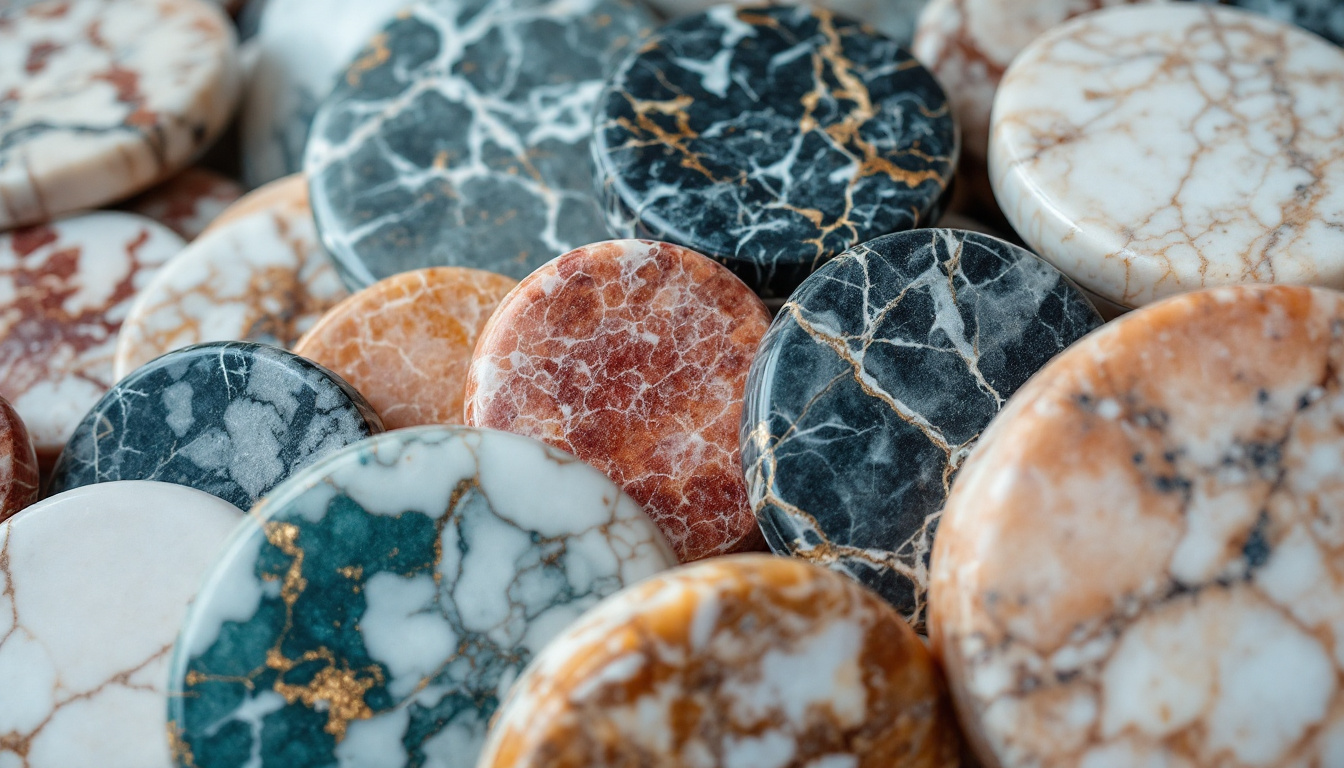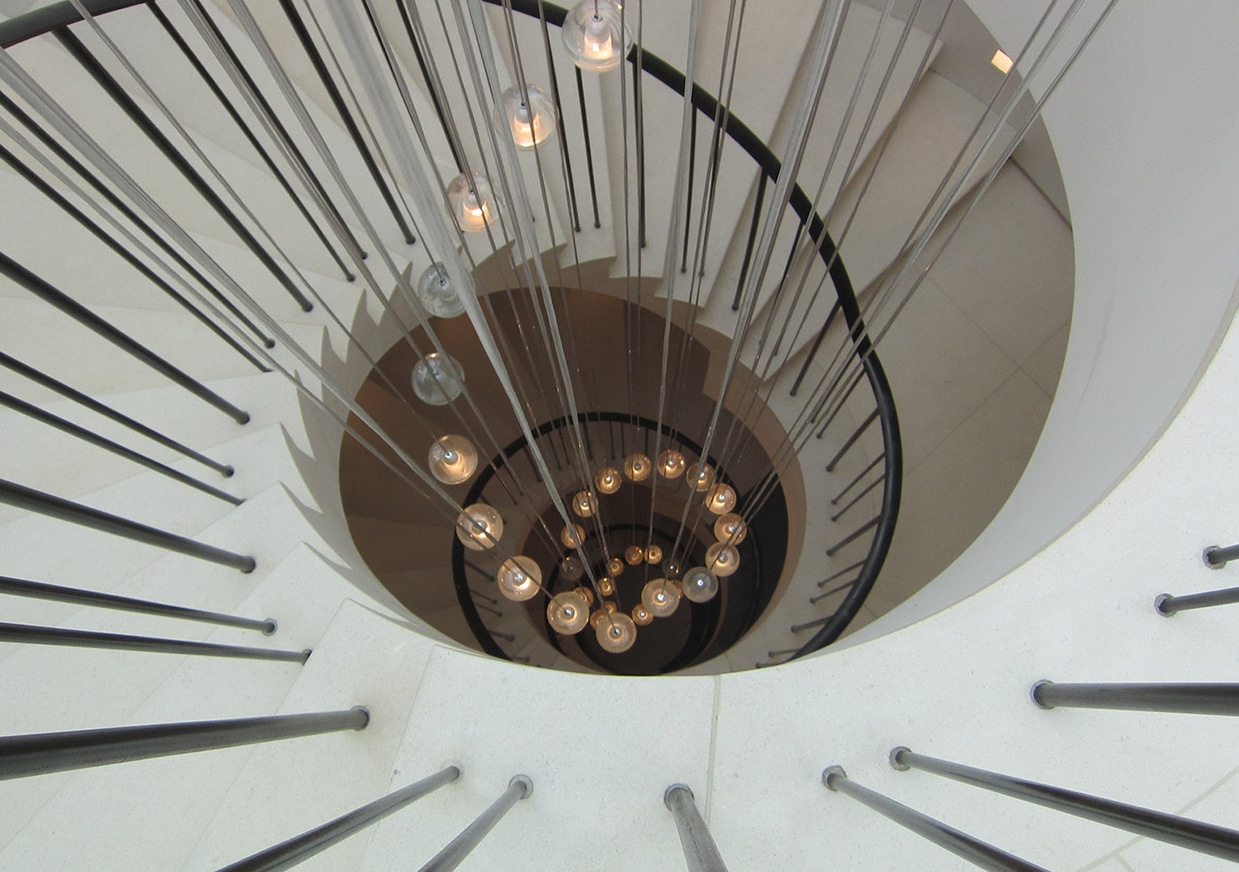
Marble, a metamorphic rock derived from limestone, has been a cherished material for centuries, used in everything from iconic sculptures to grand architectural structures. Its natural beauty, combined with its durability, has made it a popular choice for bespoke natural stone interiors. This article will delve into the intricacies of marble, its uses in bespoke interiors, and how it is processed and finished to create stunning, one-of-a-kind spaces.
Marble’s unique characteristics, including its wide range of colors and intricate veining, make it a versatile material for interior design. Whether it’s used for flooring, countertops, or decorative accents, marble can transform an ordinary space into a luxurious and elegant environment. However, understanding the properties and maintenance requirements of marble is essential for its long-term preservation and aesthetic appeal.
Formation and Types of Marble
Marble is formed through a process known as metamorphism, where sedimentary limestone is subjected to high temperatures and pressures within the Earth’s crust. This process alters the crystalline structure of the limestone, resulting in the unique veining and color variations found in marble.
There are numerous types of marble, each with its distinct color, pattern, and mineral composition. Some of the most popular types include Carrara marble, known for its white to gray color and subtle veining; Calacatta marble, prized for its bold veining and luxurious appeal; and Emperador marble, recognized for its rich brown color and dramatic veining.
Understanding Marble Grading
Marble is graded based on several factors, including its color consistency, the size and distribution of its veins, and the presence of any cracks or fissures. Grade A marble, the highest quality, has consistent coloration, minimal veining, and no visible cracks. Lower grades may have more noticeable veins, color variations, and potential structural flaws.
Understanding marble grading is crucial when selecting marble for bespoke interiors. Higher grade marble often comes with a higher price tag, but its superior quality and aesthetic appeal can significantly enhance the value and beauty of a space.
Marble in Bespoke Interiors
Marble’s natural elegance and versatility make it a popular choice for bespoke interiors. It can be used in a variety of applications, from flooring and wall cladding to countertops and decorative accents. Each piece of marble is unique, allowing designers and homeowners to create truly one-of-a-kind spaces.
However, using marble in interiors requires careful planning and consideration. The type, grade, and finish of the marble, as well as its maintenance requirements, should all be taken into account when designing a bespoke interior.
Marble Flooring
Marble flooring can add a touch of luxury and sophistication to any space. Its natural beauty, combined with its durability, makes it a popular choice for high-traffic areas such as entryways and kitchens. However, marble flooring requires regular maintenance to preserve its appearance and prevent damage.
When selecting marble for flooring, it’s important to consider the type and grade of the marble, as well as the finish. Polished marble, for example, offers a high-gloss finish that enhances the marble’s natural colors and veining, but it can be slippery when wet. Honed marble, on the other hand, has a matte finish that provides more traction but may not show the marble’s characteristics as vividly.
Marble Countertops
Marble countertops are a timeless choice for kitchens and bathrooms. They offer a unique blend of beauty and functionality, providing a durable and heat-resistant surface that’s perfect for cooking and food preparation. However, marble countertops can be prone to staining and etching, so they require regular sealing and careful cleaning.
When choosing marble for countertops, it’s important to consider the marble’s grade and finish. Higher grade marble will have fewer imperfections and offer a more consistent color and pattern. The finish can also affect the countertop’s appearance and performance. For example, a polished finish will enhance the marble’s natural beauty but may show scratches more easily, while a honed finish will provide better resistance to scratching but may not be as vibrant.
Processing and Finishing of Marble
Once marble is extracted from the quarry, it undergoes a series of processes to transform it into a usable product. These processes include cutting, polishing, and finishing, each of which can significantly affect the marble’s appearance and performance.
Cutting involves slicing the marble into slabs or tiles of specific sizes. This process requires precision and skill to ensure the marble is cut accurately and without causing any damage. Once cut, the marble is polished to enhance its natural colors and veining. The level of polish can vary, from a high-gloss finish that reflects light to a matte finish that provides a more natural look.
Marble Finishing Techniques
There are several finishing techniques used to enhance the appearance and performance of marble. These include polishing, honing, and sealing. Polishing involves grinding the marble’s surface to a high gloss, enhancing its natural colors and veining. Honing, on the other hand, creates a matte finish that provides a more natural look and better resistance to scratching.
Sealing is an essential step in marble finishing. It involves applying a protective coating to the marble’s surface to prevent staining and etching. Regular sealing is necessary to maintain the marble’s appearance and prolong its lifespan.
Maintenance and Care of Marble
While marble is a durable material, it requires regular maintenance to preserve its beauty and prevent damage. This includes regular cleaning, sealing, and occasional polishing. Using the right products and techniques is crucial to maintaining the marble’s appearance and preventing damage.
Cleaning involves removing dirt and spills from the marble’s surface using a pH-neutral cleaner. Acidic or abrasive cleaners should be avoided as they can etch the marble’s surface. Sealing involves applying a protective coating to the marble to prevent staining and etching. This should be done regularly, depending on the marble’s usage and exposure to moisture.
Preventing Damage to Marble
Preventing damage to marble involves taking precautions to avoid scratching, staining, and etching. This includes using coasters under drinks, placing hot items on trivets or heat-resistant mats, and wiping up spills immediately. Regular sealing can also help prevent damage by providing a protective barrier on the marble’s surface.
Despite these precautions, marble can still be susceptible to damage. If damage occurs, it’s important to address it promptly to prevent further deterioration. This may involve polishing out scratches, removing stains, or repairing cracks or chips.
Conclusion
Marble’s natural beauty and versatility make it a popular choice for bespoke natural stone interiors. However, understanding the properties, processing, and maintenance requirements of marble is crucial for its long-term preservation and aesthetic appeal. With careful selection, proper installation, and regular maintenance, marble can transform any space into a luxurious and elegant environment.
Whether you’re a designer, homeowner, or simply a lover of natural stone, understanding marble can enhance your appreciation for this timeless material. Its unique characteristics, combined with its durability and versatility, make it a truly remarkable material for bespoke interiors.
Discover the Elegance of Bespoke Marble with A F Jones Stonemasons
If you’re inspired by the timeless elegance of marble and wish to incorporate its natural splendor into your interiors, A F Jones Stonemasons is here to bring your vision to life. With over 160 years of heritage and a commitment to both traditional craftsmanship and modern technology, we offer a complete service that includes design, manufacture, and installation. Our experienced team is ready to support you in realizing the true potential of stone in your space. From grand projects to intimate bespoke works, we handle it all with precision and care. Visit our showroom in Oxfordshire or make an enquiry today to start your journey toward a luxurious and bespoke natural stone interior.


